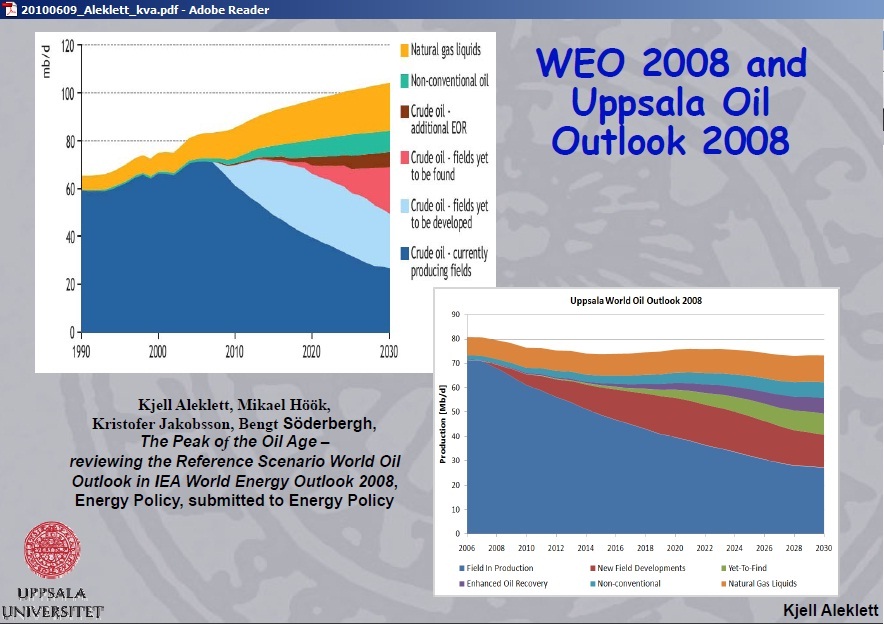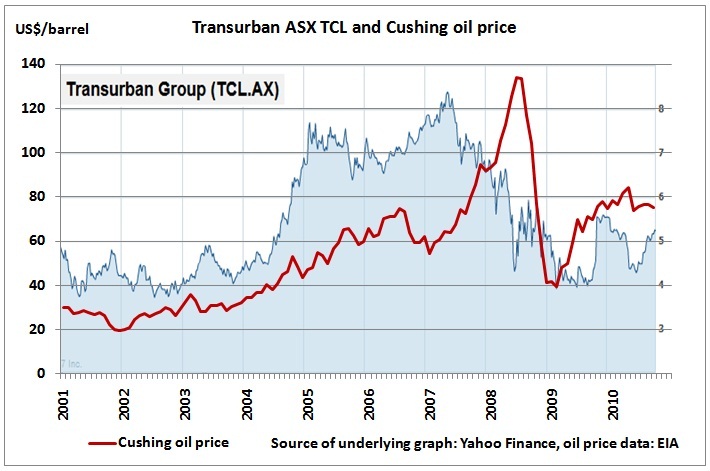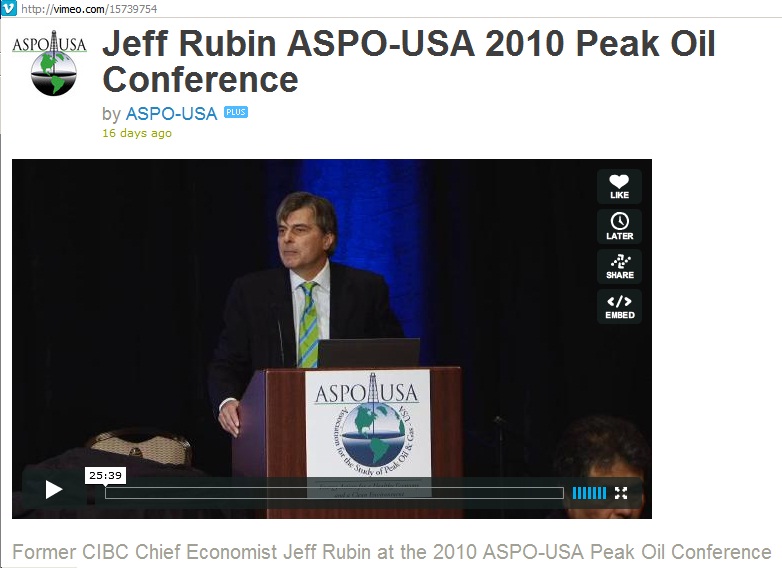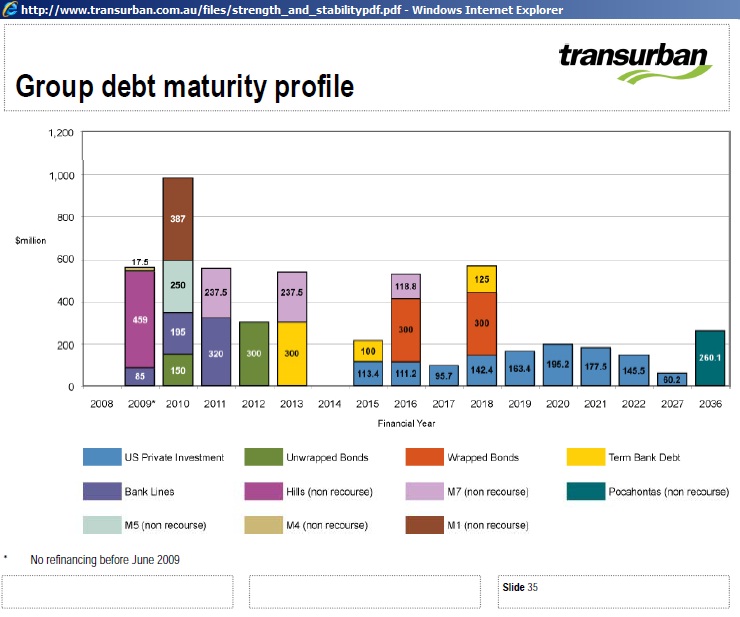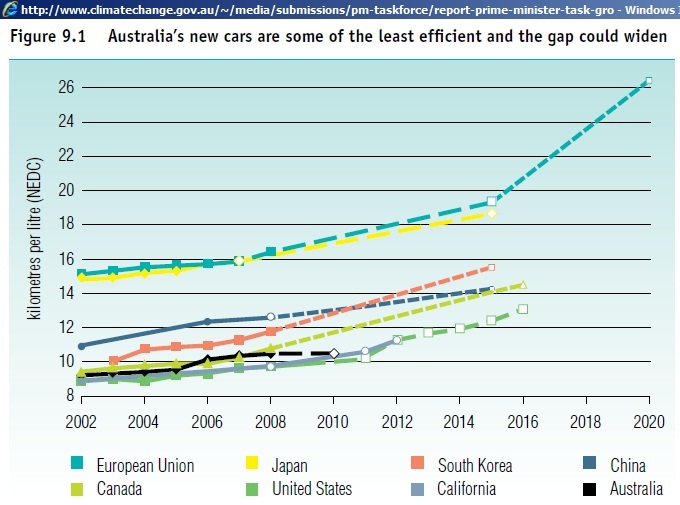The NSW government still has not understood the risks involved when approving the M2 widening while global oil production is set to decline.
Wider M2 will drive deeper into motorists’ wallets
MOTORISTS in the transport-starved north-west will be hit with tolls of more than $6 each way to pay for widening the M2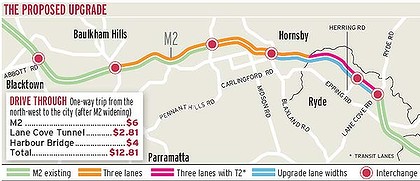
Once completed, motorists will pay more than $20 a day in tolls to drive to the city from the north-west.
The above graph is from Prof. Kjell (pronounced like “Shell”) Aleklett, University of Uppsala. It compares
(1) Top left: the International Energy Agency’s World Energy Outlook WEO 2008 with practically flat crude oil production but growing non-conventional oil and growing Natural Gas Liquids (you cannot fly planes with LPG)
(2) Right bottom: Aleklett’s own calculations, using IEA data
An oil dependent economy which is supposed to grow does not like declining oil production. In the last 5 years crude oil production did not increase andwe have experienced the response of the financial system to this bumpy production plateau. So the real decline phaseafter peak oil will be worse.
Prof. Aleklett is in Australia right now. The program and contact details are on the ASPO website: http://www.aspo-australia.org.au/
Kjell had a briefing session with around 40 NSW government officials yesterday in Sydney.
The decline rate in Kjell’s graph above is 1.1% pa until 2016. Australia’s oil supplies consist of (see “Australian graphs” in the menu)
20% local crude production declining by 50% by 2016 (Geoscience Australia)
80% imports declining by 1/3 over 10 years (see: http://www.crudeoilpeak.com/?p=1934, assuming only 0.5% pa production decline in oil exporting countries, OPEC and Chindia increasing their share)
So we have 0.2*0.5 + 0.8*0.333/2 = 23% decline
By contrast, daily traffic on the M2 is expected to grow by 17,300 from 97,000 to 114,300, a 17.8 % increase. These are incompatible trends which cannot be bridged by green cars or yellow cars
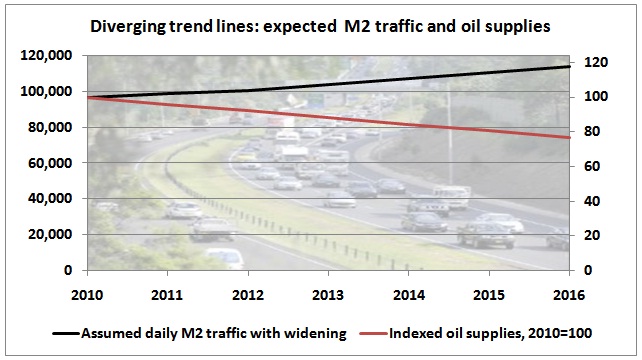 The whole M2 widening project is based on following UNTESTED assumptions, listed in this summary against reality:
The whole M2 widening project is based on following UNTESTED assumptions, listed in this summary against reality:
|
Assumption |
Reality |
| (1) There will be no oil price shocks causing recessions and/or limiting the paying capacity of motorists | Next oil price shock 2012. By 2015 oil importers outside Chindia must reduce oil demand by 1/3rd. In our car dependent cities, car pooling is the only quick and cheap way to reduce fuel consumption. Toll revenue will decline |
| (2) Transurban’s new andold debt can always be rolled over because there will not be another financial crisis. The cash flow will always be positive | The financial crisis has now moved in to the phase of sovereign debt. This problem is not over. Declining oil production means that an oil dependent economy will find it difficult to repay debt. Therefore, re-financing will be a permanent headache. |
| (3) There will be no war or social unrest in the Middle East when the truth comes out about OPEC’s overstated reserves | The Middle East is a tinder box. Iran needs $130 oil to balance their budget by 2015 |
| (4) Perpetual economic growth in China, India and other Asian countries is a given | China needs EVERY YEAR an additional 300-400 Kb/d, India around 150 kb/d. These incremental oil flows are physically not available on a sustainable basis. |
| (5) There will be no sudden and dramatic climate change events. This allows us a long transition period to a carbon constrained world | Cilmatologist James Hansen gives Australian coal 10 years. The Arctic summer sea ice may disappear in this decade with yet unknown consequences for the global climate |
| (6) There will be a smooth transition to a green car fleet and alternative energies along with new technologies will be available as a primary energy source to drive vehicles over the next decades | Due to the huge inertia in the current car fleet, only 20% of cars could be “green” cars by 2020. The main problem is the availability of carbon free primary energy |
| (7) Cars will always be more important than food production and other essential services like public transport and therefore the behaviour of motorists will never change | 60 mb/d of oil equivalent is needed just to give the world population of 6.7 bn sufficient food at 2,500 Kcal a day. That will be our priority. |
| (8) Immigration, the main driver for population growth in the North West, can continue at current levels and there are enough funds available in State and Federal budgets to finance the associated additional infrastructure like hospitals, schools, local roads etc | Immigration will have to be reduced when physical fuel shortages start to appear at filling stations. It is well known that existing hospitals are overcrowded and budgets for new infrastructure are tight |
| (9) There will always be sufficient water and power supply for the development proposed in the Sydney Metropolitan Strategy | In the next El Nino event the water problem will come up again. Power is already short now even without a higher population |
| (10) The proposed North West Rail Link (if ever built) will have no impact on M2 traffic | By the time this rail tunnel would open, we would be well down the oil decline path with a lot of long distance commuting done by public transport, whether people like it or not |
| (11) The world in 2020 (and 2040 for that matter) works still in the same way as in 2010 | The next 10 years will see a lot of changes on 4 fronts: financial, oil supplies, climate and geo-politics |
Let us formulate these assumptions as risks. Most of these have been covered in earlier posts on this website so this summary will mainly refer to these links, but there are also new, external links:
(1) Oil price shock
The next oil price shock is expected just when the M2 widening is ready for traffic
22/10/2010 Megaprojects increments: next oil crunch 2012
http://www.crudeoilpeak.com/?p=1971
Graph up: Impact of 2008 oil price shock on Transurban shares. The recession in the US started end 2007
22/10/2010 Fuel shortages in France – some lessons
http://www.crudeoilpeak.com/?p=1984
10/10/2010 Oil importers outside Chindia to save 1/3 by 2015, says US petroleum geologist at ASPO conference
http://www.crudeoilpeak.com/?p=1934
3/7/2010 Iran needs $130 oil to balance budget. IEA: Iran’s crude oil production to decline by 700 Kb/d by 2015
http://www.crudeoilpeak.com/?p=1669
Australian oil production will decline while global oil export volumes will shrink
3/9/2010 Australian crude oil imports could decline by 5% in next years
http://www.crudeoilpeak.com/?p=1843
The Australian oil production and import situation can be found under “Australian Graphs”
http://www.crudeoilpeak.com/?page_id=1225
Watch this video from Jeff Rubin (formerly in the Canadian bank CIBC) about triple digit oil prices in the not too distant future
http://www.jeffrubinssmallerworld.com/blog/
ASPO 2010 talk
http://vimeo.com/15739754
(2) Debt repayment/roll-over in next credit crunch
Transurban has non-current liabilities of A$5.27 bn (page 52 in:)
http://www.transurban.com.au/files/TRN021_AR10_Fins_FA3(1).pdf
What investors should check are Transurban’s ref-financing requirements in the next 5 years. This graph is from the slide show “Strength and Stability” (February 2008)
http://www.transurban.com.au/files/strength_and_stabilitypdf.pdf
Updates can be found on the ASX website
http://www.asx.com.au/asx/research/companyInfo.do?by=asxCode&allinfo=&asxCode=TCL#headlines
Attention is drawn to the cash flows presented on page 54 of the above quoted Annual Report 2009/10.
The net increase in cash in this financial year was only achieved by proceeds from issues of stapled securities.
As per 22ndJuly 2009, the credit rating of Transurban Finance Company Pty Ltd for A$3.2 bn was Baa1
http://www.transurban.com.au/files/july_22_Credit_Ratings_Update.pdf
The ticking debt clocks including that of Australia can be seen here:
http://www.usdebtclock.org/world-debt-clock.html
(3) Oil war or social unrest in the Middle East
The geopolitical situation is tense and can explode any time
6/4/2010 Australia needs a Strategic Oil Reserve
http://crudeoilpeak.info/australia-needs-strategic-oil_reserve
Diesel inventories are just 30 days. See table under “Australian graphs”
(4) Chindia’s oil dependence
China needs an additional 300-400 Kb/d of oil imports, India around 150 Kb/d EVERY YEAR
9/11/2009 World needs to save at least 3 mb/d by 2020 for China to grow. Any volunteers?
http://www.crudeoilpeak.com/?p=525
When China gets stuck in peak oil, Australia will be hard hit because no-one is preparing for that moment
(5) Abrupt Climate change
8/3/2010
NASA climatologist James Hansen at Sydney Uni: “Australia doesn’t agree now that they got to stop their coal, but they are going to agree. I can guarantee you that within a decade or so because the climate change will become so strongly apparent that’s going to become imperative”
http://www.usyd.edu.au/sydney_ideas/lectures/2010/professor_james_hansen.shtml
These are the main tipping points
Arctic Sea Ice, Greenland Ice Sheet, West Antarctic Ice Sheet, Atlantic Thermohaline Circulation, El Nino Southern Oscillation, Indian Summer Monsoon, Sahara/Sahel West African Monsoon, Amazon Rainforest, Boreal Forest
http://www.pnas.org/content/105/6/1786.full
Arctic death spiral: Naval postgrad school’s Maslowski “projects ice-free fall by 2016 +- 3 yrs”
http://climateprogress.org/2010/06/06/arctic-death-spiral-maslowski-ice-free-arctic-watts-goddard-wattsupwiththat/
When the Arctic summer sea ice disappears, the weather on the Northern hemisphere will dramatically change and show us what global warming really means.
(6) Slow transition of car fleet
The Prime Minister’s Task Group on energy efficiency has recently released a report with this graph:
It shows Australia makes no progress in improving the fuel efficiency of new cars (black dashed line), let alone in the whole car fleet. Therefore, the RTA is wrong in claiming there are fuel efficiency gains and this could be a solution to peak oil. And even if a 20 % improvement for new cars were to be achieved in the next years and assuming an optimistic 10% of old cars are replaced every year that would translate to only a 2% pa fuel reduction of the whole fleet. Comparing that with the opening gap between assumed traffic growth and oil supplies above it becomes clear that it is impossible to bridge the gap in this way.
(7) Food production priority over private car use
The world’s population needs in food/energy terms 6.7 bn x 2,500 Kcal/day = 12 mb/d oil equivalent. For every Kcal of energy contained in food 5 Kcal are needed to produce, transport and prepare that food.
See slides 37 and following from the above quoted presentation
A whopping 60 million boe/d is needed to feed the world population. Urban cars gas-guzzling around on toll-ways for convenience purposes will be the least of our problems.
http://www4.tsl.uu.se/~aleklett/powerpoint/20100609_Aleklett_kva.pdf
(8) Population growth limits
As soon as petrol lines arrive at filling stations motorists will understand that every new arrival means those queues will just be longer. They will demand a reduction in immigration. With natural population growth, Australia’s population will peak at between 24-25 million in 20-30 years, just 10-15 % higher than now. There is no oil-geological mechanism by which population growth will induce higher oil production.
9/4/2010 Australian Population Scenarios in the context of oil decline and global
warming
(9) Physical availability of water and power resources
WARWICK GREGOR, BFG EQUITIES: …..We’re going to suffer quite a severe shortage of electricity supply in many States in Australia over the next five to ten years because there has not been investment in power stations.
http://www.abc.net.au/lateline/business/items/201010/s3036694.htm
(10) Competing North West Rail Link
It is unlikely that the NW Rail Link will ever be built due to budget constraints. But this risk can be eliminated by building a rail line on the M2 (Transperth model)
instead of the 3rdlane widening as proposed many times on this web page. This is in fact the solution which would make Transurban’s business sustainable.
26/5/2010 Submission Sydney’s Metropolitan Transport Plan
http://www.crudeoilpeak.com/?p=1519
(11) Relevance of concession extension
The concession extension of 4 years from 2042 to 2046 is totally irrelevant. Already by 2020 we are going to have a different world: ongoing financial crisis, declining oil production and worsening climate.
—————
Note: Part 1 of this series is here:
21/9/2010 RTA fails to present business case for M2 widening (part 1)
http://www.crudeoilpeak.com/?p=1886
and:
19/6/2010 M2 widening: Primary Energy Dilemma for cars
http://crudeoilpeak.info/m2-widening-primary-energy-dilemma-for-cars
Other relevant posts:
7/2/2010 Which bank would now finance more road tunnels?
http://wwwcrudeoilpeak.com/?p=1097
27/1/2010 Peak oil brought forward moment of truth for Lane Cove Tunnel
http://wwwcrudeoilpeak.com/?p=998
